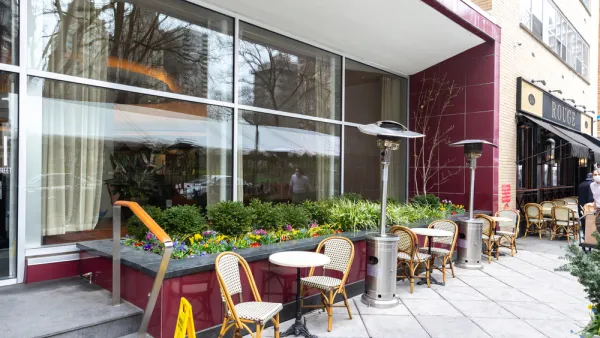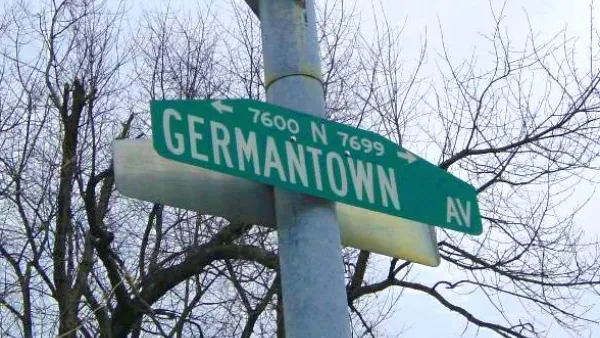"There is just too much to learn," from open streets events, says Philadelphia Inquirer Architecture Critic Inga Saffron.
According to a column by Inga Saffron (and professional planners might be happy to hear this), "urban planners are starting to pile up the wins. They've introduced amenities that encourage the slow-movers - things like sidewalk cafes, parklets, bike lanes, and riverfront trails. It's no accident that the emphasis on people-friendly attractions has coincided with the greatest urban revival since American cities crashed in the 1960s."
That remarkable summation of the current zeitgeist in American planning comes courtesy of Saffron's take on the open streets movement's latest in-roads in Philadelphia. In fact, Saffron sees open streets as a way for Philadelphia to make even more substantive contributions in the advancement of people-first planning.
Saffron's column counters the predictable outcry from the "car-first lobby," which has already commenced with berating the idea of car-free days in Philadelphia's Central City, following the accidental model provided by Pope Francis's recent visit to the city. To counter the apocalyptic future imagined by such naysayers, Saffron provides a more sober explanation of the current proposals for open streets events in Philadelphia as well as some of the benefits such an event could bring to the city. One potential benefit would follow the example of Atlanta in gaining new understanding about the city's traffic needs.
FULL STORY: Changing Skyline: Why Open Streets is not the apocalypse

National Parks Layoffs Will Cause Communities to Lose Billions
Thousands of essential park workers were laid off this week, just before the busy spring break season.

Retro-silient?: America’s First “Eco-burb,” The Woodlands Turns 50
A master-planned community north of Houston offers lessons on green infrastructure and resilient design, but falls short of its founder’s lofty affordability and walkability goals.

Delivering for America Plan Will Downgrade Mail Service in at Least 49.5 Percent of Zip Codes
Republican and Democrat lawmakers criticize the plan for its disproportionate negative impact on rural communities.

Test News Post 1
This is a summary

Test News Headline 46
Test for the image on the front page.

Balancing Bombs and Butterflies: How the National Guard Protects a Rare Species
The National Guard at Fort Indiantown Gap uses GIS technology and land management strategies to balance military training with conservation efforts, ensuring the survival of the rare eastern regal fritillary butterfly.
Urban Design for Planners 1: Software Tools
This six-course series explores essential urban design concepts using open source software and equips planners with the tools they need to participate fully in the urban design process.
Planning for Universal Design
Learn the tools for implementing Universal Design in planning regulations.
EMC Planning Group, Inc.
Planetizen
Planetizen
Mpact (formerly Rail~Volution)
Great Falls Development Authority, Inc.
HUDs Office of Policy Development and Research
NYU Wagner Graduate School of Public Service





























